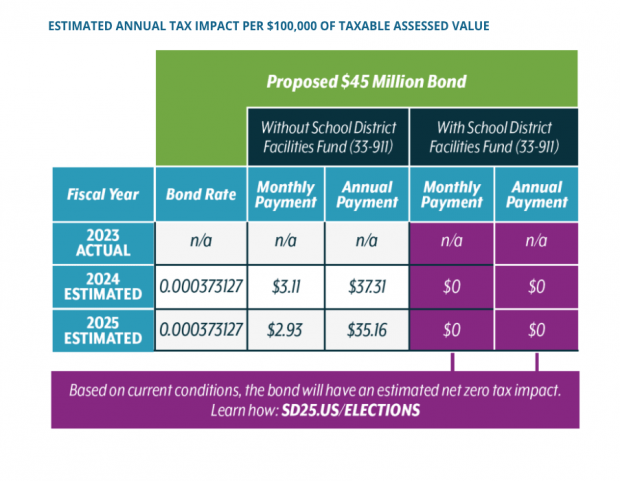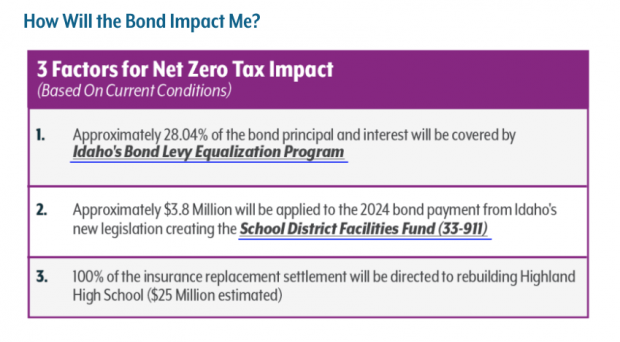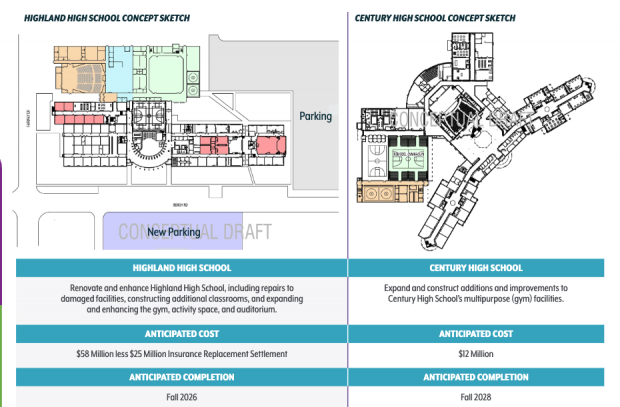It’s arguably harder to build and upgrade schools in Idaho than in any other state.
That’s because Idaho has one of — if not the — most stringent required pass rates for school bonds in the nation (a supermajority of 66.67%).
And since 2011, school bonds have been more likely to fail than pass.
Couple those facts with the recently slashed March school elections, and the political environment for successful bond measures is unfriendly to say the least.
On top of that, increasingly organized opposition campaigns have contributed to districts’ unexpected election losses and even legal troubles.
Still, schools must be built and updated as populations grow and buildings age.
Some districts have successfully evaded the bond quagmire by instead running plant facilities levies — which only require 55% approval. But even that option has its drawbacks.
The Idaho Falls school district recently passed a $3.3 million plant facilities levy to build an elementary school — after a prior attempt at a historic $250 million bond failed — only to learn that the Tax Commission would not certify it due to a legal roadbump (which the district is contesting in court).
Others find success with second chances — running a failed measure a second time, often with better outcomes. But that’s not an easy or efficient way to fund buildings and updates, either.
It’s in these murky waters that the Pocatello/Chubbuck school district is putting a 15-year, $45 million bond on the ballot this November, partly to upgrade and restore a high school after a devastating fire last spring. At the center of the effort is a question with no clear answers: what does it take to pass a bond in Idaho — and to do it the first time?
Leading up to this pivotal ballot ask — the first of its kind since a successful 1998 bond for a new high school — district officials have been making fiscally conservative choices that are almost unheard of in today’s education landscape. And they’re leaning heavily on a new school district facilities fund — a boon for districts that was won at the expense of the March election — to showcase the ballot measure as having a “net zero tax impact.”
If the strategy is effective, it could become a blueprint for other districts to follow.
- Last spring, Pocatello/Chubbuck lowered its two-year supplemental levy by $2 million, when it’s far more common for districts to continually increase their levies to keep pace with inflation.
- And last year, the district purchased a $12.6 million building to house its career technical education programs without having to go to voters — another rarity.
- On top of that, the district says the newly-established school district facilities fund will effectively negate costs for taxpayers.


Maybe the district’s fiscal conservatism, combined with the new facilities fund, will be enough for a win this November. But when it comes to school elections, nothing’s certain — especially the first time around.
Last March, Coeur d’Alene’s failed $25 million perpetual supplemental levy put more than 300 staffers’ jobs on the line. But the two-year, $25 million supplemental levy went on to pass in May.
And Bonneville’s $34.5 million bond failed in May — while the neighboring Idaho Falls district’s $33 million plant facilities levy passed — but then succeeded in August.
Pocatello/Chubbuck leaders don’t seem to be taking any chances, and plan to invest $26,000 on an education campaign that includes sending out postcards, putting ads on radio, TV, and social media, and producing an informational video.
But even that is dangerous territory.
In all election-related communications, districts must ensure that they are educating, not advocating — a fine line that can lead to lawsuits if voters feel lines have been crossed.
Bond asks today — with the quality of students’ classrooms and schools at stake — require plenty of careful planning, tiptoeing, and finger crossing.
Even so, the odds of that being enough are less than a coin toss. For Pocatello/Chubbuck, voters will get the final say on Nov. 7.

